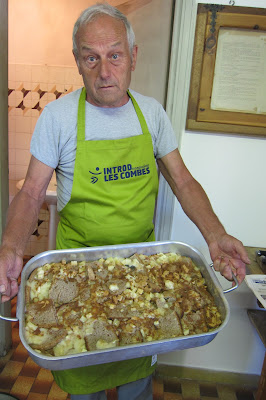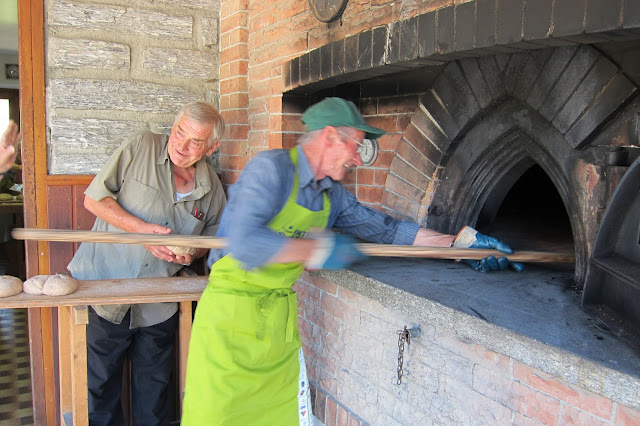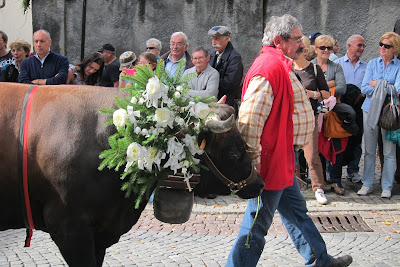I love radicchio.....I don't know why, but I'm simply enamored with bitter vegetables this winter. I never really noticed radicchio when I lived in the US, but in Italy, I simply can't escape it. I walk into the vegetable market and I am literally faced with a wall of more types of radicchio than I can count. Ok, maybe I can count them if I tried, but my point is that there are many types of radicchio. For many of them, the taste is about the same, but the stalk/leaf ratio is different, so they are good for different types of recipes.
 |
| These are three types of radicchio that I happen to have in my refrigerator right now (and one that I started to eat)...round, long, and treviso |
I love all radicchio, and it's great prepared in many different ways.... roasted, sauteed, in risotto, wrapped around a delicious stuffing, in soup....some weeks I eat radicchio every day, each meal a prepared in a new way. I love colorful food, and radicchio is one of the few ways to add seasonal color to a winter's plate.
But my favorite kind of radicchio is treviso radicchio. Why, do you ask? First, it is gorgeous, kind of looks like an orchid. Or a crazy squid if a squid was feeling like a vegetable.
 |
| When I look at this, all I see is an orchid-squid. |
Not only does treviso radicchio make me giggle, but it has an exquisite taste. It's characteristic bitter taste is somewhat more mild, with sweet overtones. It's wonderful eaten raw, but I think roasting it helps round out the flavor a bit. Its stalk is also more tender then other types of radicchio, which makes it better for roasting.
If you can find this kind of radicchio where you live, snatch it up! It's a special treat. Roasting them are easy, you just need:
-treviso radicchio (or some other kind or radicchio if you must, halved or quartered...leave treviso radicchio whole)
-extra virgin olive oil
-balsamic
-fleur de sel (or tasty salt of choice)
-freshly ground black pepper.
Toss the radicchio in a small amount of olive oil (couple of tablespoons), and place in a baking dish. Drizzle on a dash of balsamic, and sprinkle with fleur de sel and the freshly ground pepper. Bake in a 375 F oven for 30 minutes or until tender, and eat immediately!





















































